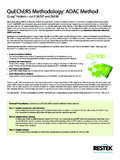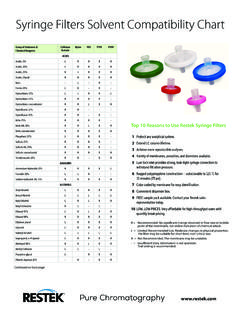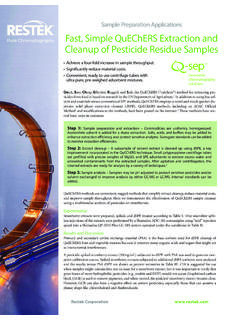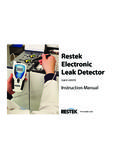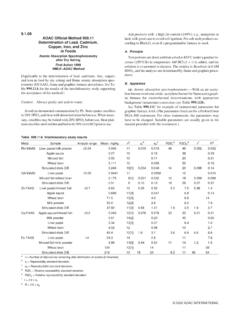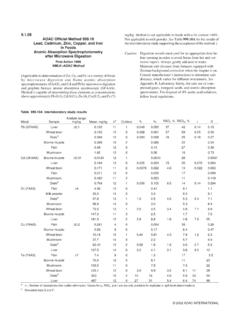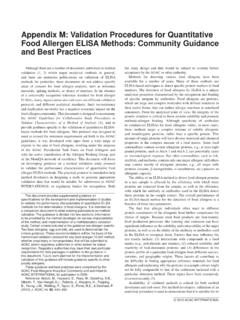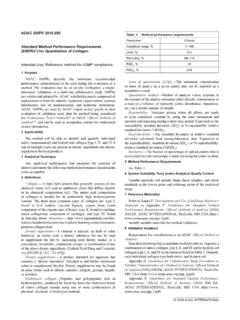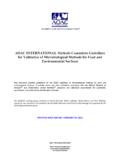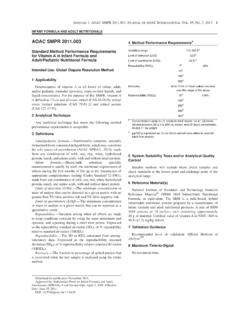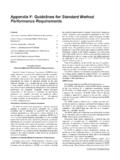Transcription of Single-Column Method for HPLC Analysis of …
1 Figure 2 Tar taric and malic acids, the pr imary organic acids ingr ape juice, resolved by an Allure Organic Acids fruit juice industry in the US alone is worth over $12 billionper year1and is many times that worldwide. As with other indus-tries in which there is a large potential for profit, unscrupulousjuice producers and traders have found ways to replace or extendmore valuable juices. This can be done by substituting sugars forjuice solids, or by diluting higher cost juices with less expensiveones. For example, white grape juice and pear juice have beenused to extend other, more costly juices. To detect these adulter-ations, a number of laboratories employ fruit juice juices are chemically quite complex, several complemen-tary tests should be performed to verify authenticity.
2 These caninclude determining sugar profile and sorbitol content; minerals;anthocyanin pigments; phenolics; oligosaccharides; carbon stableisotope ratio for various components; and or ganic acid performance liquid chromatography ( hplc ) is a powerfultool in analyses of many of these components. With these com-plex matrices, the resolving power of hplc is invaluable foraccurately quantifying acids give fruit products their characteristic the or ganic acids content varies in composition and in con-centrations among different fruit juices, or ganic acid content canbe used to identify a product and verify its purity. For example,malic acid is a major component of the or ganic acid profile ofapple juice. If apple juice has been diluted, , with sugar water,the malic acid content will be low.
3 In grape juice, tartaric acid ispresent at relatively high levels. Cranberry juice, on the otherHPLCA pplicationsnoteRestek Corporation (800) 356-1688 (814) 35 3-1300 #59530 HPLCS ingle-Column Method for hplc Analysis of Organic Acidsin Fruit Juices, Using an Allure Organic Acids ColumnFigure 1 Organic acids pla y multi ple roles in food an d beverage sys-tems: they are impor tant fla vor compounds, and they arein dicators of pr oduct quality. Organic acid pr ofiles are moni-to red to determine the purit y of ce rtain fruit juices. In somefood an d beverage systems they are added as acidula nts, tocontrol the pH of a product . Certain organic acids al so ca n beused as antimicrobial agents; for example , pro pi onic acid ca nbe us ed to slo w mold growth.
4 Malic acid, citric acid, and oth-ers are found in fruit s. Oxalic acid is pr esent in sp inac h andrhuba rb ; grapes contain ta rta ric ys is of polar organic acids can be diffic ult on conven-ti onal revers ed phase columns . A highly aqueo us mobil ephase is needed to increa se inte raction bet wee n the acids an dthe stationary pha se, but stationary phases in conve nti ona lC18 columns collaps e in 100% aqueous mobile phases. TheAllure Organic Acids column was designe d to enhanceretention and selectivity in challenging ap plications su ch asthis. Pola r embedded groups allow the al kyl groups inAllure Organic Acids columns to remain exte nded in 100%aqueous mobile pha ses; retention is stable and reproduci ble .Excellent separation of tartaric and quinic acids by anAllure Organic Acids acid1 acid1 acid1 acid1 :Fruit Juice Organic Acid MixtureInj.
5 :10 LConc.:see peak listSample Diluent:purified waterColumn:Allure Organic AcidsCatalog #:9165585 Dimensions:300 x Size:5 mPore Size:60 Conditions:Mobile Phase:100mM phosphate buf fer, pH :ambientDet.:UV @ 226nmLC_0238 Peak acidSample:grape juiceInj.:10 LConc.:grape juice:water (50:50,v/v)Sample Diluent:purified waterColumn and conditions same as Figure 1LC_0237 Quinic, malic, and citric acids in cr anberry juice re Organic Acids ColumnPhysical Characteristics:partic le size:5 m, spherical,no n-endcapped phasepo re size :60 pH range to 7. 5te mperature li mit:80 #300mmx , contains quinic acid. A cranberry juice that contains mea-surable amounts of tartaric acid would be suspect. Thus, it is criti-cal to both identify and quantify the or ganic acids in a fruit juiceto determine if the juice is described or ganic acid content of fruit juices, such as cranberry juiceand apple juice, can be determined using AOAC Method this procedure, reversed phase hplc with a UVdetector isused to quantify or ganic acids.
6 Because several of the or ganicacids are extremely difficult to resolve, this procedure calls fortwo reversed phase C18 columns in series. A 100% aqueousmobile phase (phosphate buffer at pH ) is used to maximizethe interaction between the acids and the stationary there is a simpler and more reliable approach. A single 30cmAllure Organic Acids column ef fectively resolves key or ganicacids, such as tartaric and quinic acids, using the chromatographicconditions specified in AOAC Method !Figure 1 shows a separation of typical fruit juice or ganic acids,including tartaric, quinic, malic, citric, and fumaric acids. Notethe baseline resolution between tartaric and quinic acids. Thissuperior performance makes interpretation of analytical data morereliable. Similarly, note the distinct or ganic acid profiles for grapejuice and cranberry juice cocktail in Figures 2 and of polar or ganic acids can be difficult on conventionalreversed phase columns , even when using highly aqueous mobilephases and two reversed phase columns in series for the separa-tion.
7 In contrast, an Allure Organic Acids column providesenhanced retention and selectivity for these compounds, allowingthe separation to be performed on one 30cm column. Retention isstable and reproducible, even with a 100% aqueous mobile phase,as specified in AOAC Method If you are monitoring fruitjuice quality, and want a trouble-free Analysis with accurateresults, we highly recommend an Allure Organic Acids of Apple JuiceTechnical Bulletin #2 (1996), Analytical ChemicalServices of Columbia, Official methods of Analysis (2000), AOAC International, 17th edition, Method # 3 Peak acidSample:cranberry juiceInj.:10 LConc.:cranberry juice:water(50:50,v/v)Sample Diluent:purified waterColumn and conditions same as Figure 1LC_0236citric acid2000 g/mLfumaric acid10malic acid2000quinic acid2000tartaric acid2000In water, 1 water, 5mL/ampulFruit Juice Organic Acid & TRADEMARKSR estek patents and trademarks are the property of Restek Corporation.
8 Other t rademarks appearing in Restek literature or on its website are the property of their respective 110 Benner Circle Bellefonte, PA 16823 814-353-1300 800-356-1688 fax: 814-353-1309 France phone: +33 (0)1 60 78 32 10 fax: +33 (0)1 60 78 70 90 e-mail: GmbH phone: +49 (0)6172 2797 0 fax: +49 (0)6172 2797 77 e-mail: Ireland phone: +44 (0)2890 814576 fax: +44 (0)2890 814576 e-mail: Japan phone: +81 (3)6459 0025 fax: +81 (3)6459 0025 e-mail: Restek LTD phone: +44 (0)1494 563377 fax: +44 (0)1494 564990 e-mail: Cat.# 59530 2003 Restek Corporation.
